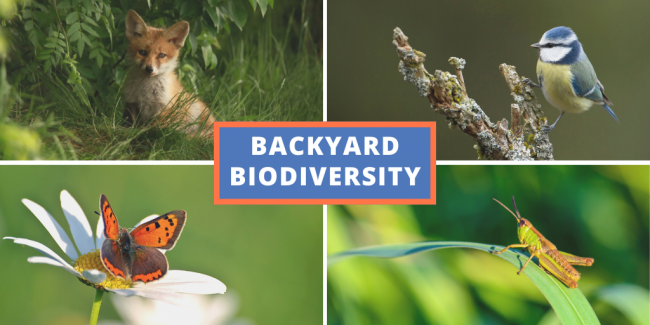In recent years, green roof gardens have gained popularity. People recognize the many benefits that green roofs offer. But what exactly are green roofs? Let’s explore this sustainable and exciting form of urban gardening.

Understanding Green Roof Systems
A green roof is a type of garden that is installed on the roof of a building. It consists of several layers. These may include:
- a waterproofing layer
- a root barrier
- a drainage layer
- growing medium
- vegetation
These layers work together to create a thriving garden space on top of a structure. Green roof systems are a place where technology meets nature!
There are two main types of green roof gardens: extensive and intensive green roofs.
What is an extensive green roof?
An extensive green roof is lightweight and low-maintenance. An extensive green roof typically features shallow soil depths. It’s planted with hardy, drought-tolerant plants such as sedums and grasses.
What is an intensive green roof?
An intensive green roof is more like a traditional garden with deeper soil depths. An intensive green roof allows for a greater variety of plant choices. They can even include shrubs and even small trees. Intensive green roofs require more maintenance. They can even be used for recreational purposes.
What is an urban heat island?
Both types of green roofs can help us combat urban heat islands. An urban heat island effect is when urban areas are much warmer than rural areas. This is because of they have fewer trees and other vegetation. Urban areas also have more dark-colored surfaces like asphalt roofs and roadways. Rooftop gardens can decrease the effects of urban heat islands. This is because vegetated roofs are naturally cooler than traditional roofs. Green roof technology will continue to improve cooling effects through time.

Benefits of Green Roofs
Green roof gardens offer a range of benefits. They can improve both the environment and the people around them. It may not be feasible for you to personally have a rooftop garden. But, you can still advocate for them across your town or city. Green roof technology is very flexible, and a rooftop garden can go anywhere!
Environmental Benefits of a Green Roof Project
There are many benefits to both extensive or intensive green roofs. These include:
Stormwater management
Green roof gardens help absorb rainwater. This reduces the strain on stormwater systems. It can also prevent flooding.
Reduction of urban heat island effect
The vegetation in green roof gardens helps lower temperatures in urban areas. This reduces the “heat island” effect that lack of trees as well as concrete and asphalt cause.
Improved air quality
Plants in green roof gardens remove pollutants from the air. This contributes to cleaner and healthier environments.
Enhanced biodiversity
Green roof gardens provide habitats for birds, insects, and other wildlife. This promotes biodiversity in urban settings.

Energy Use and Efficiency Benefits of a Green Roof
Thermal insulation
The layers of green roofs act as insulation. This reduces heat loss in winter and heat gain in summer. This helps lower energy consumption and provides cost savings.
Noise reduction
Green roof gardens can absorb sound. This reduces noise pollution from the surrounding environment.
Aesthetic and Recreational Advantages of Green Roofs
Visual appeal
Green roof gardens enhance the beauty of buildings. They add a touch of nature to urban landscapes.
Recreational spaces
Intensive green roofs can be transformed into rooftop gathering areas. These provide valuable outdoor spaces for relaxation and recreation.
Economic Benefits of Green Roofs
Increased property value
Buildings with green roof gardens often have higher property values. This is due to their beauty and sustainability features.
Reduced energy costs
The insulation that green roof plants provide can lead to energy savings. This results in lower utility bills for building owners.
Considerations for Creating a Rooftop Garden
Green roofs offer many benefits. There are several factors to consider before green roof construction.
Structural considerations
Ensure that the building’s structure is capable of supporting the additional weight. A green roof can be heavier per square foot because it’s added on top of a normal roof.
Weight and load-bearing capacity
Determine the maximum weight limit the roof can withstand. Plan the garden accordingly. Don’t install green roofs on weak or crumbling conventional roofs.
Local regulations and permits
Check with local authorities about building codes and permits required. Your town may have regulations for installing a green roof garden.
Plant selection and maintenance
Choose plants that are suitable for the climate and growing conditions of the area. Consider the amount of maintenance required to keep the garden healthy and thriving. Who will care for it in the long term?
Irrigation and water requirements
Determine how the green roof will be watered. Consider water conservation methods like rainwater harvesting.
Final Thoughts
It may not be a forest, but it’s the next best thing. Green roof gardens offer a sustainable way to bring nature into urban environments. They also provide environmental, energy-saving, and aesthetic benefits. Plus, anyone can create a green or living roof.
And…Action!
Did you enjoy learning these green roof garden tips? If so, why not show us?
Share your favorite rooftop garden photos and tag us on Instagram, Facebook, or Twitter!
Want to do more?
Become a Forest Defender today! Your monthly gift will protect the trees and biodiversity of the South.
Join our email list to get new Biodiversity in Your Backyard sent directly to your inbox!

 Like learning about biodiversity? Sign up to have more like it delivered directly to your inbox!
Like learning about biodiversity? Sign up to have more like it delivered directly to your inbox!